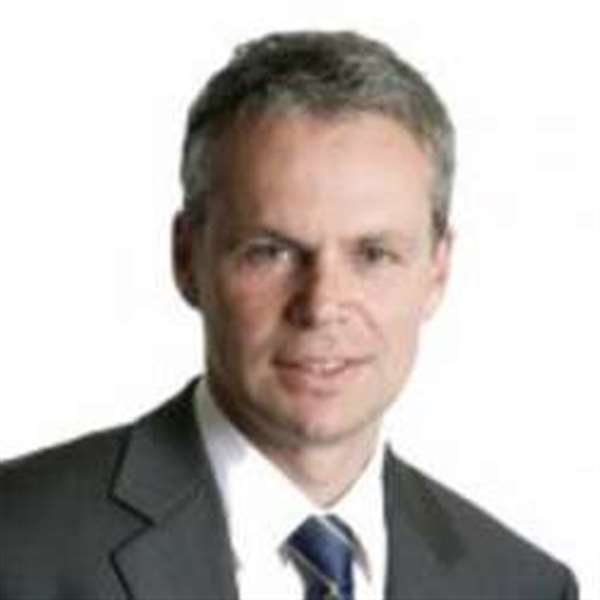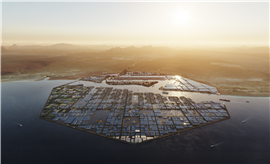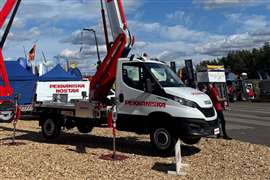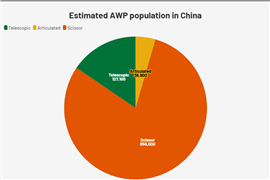17 of Saudi Arabia’s biggest construction megaprojects
23 October 2023
Saudi Arabia is undergoing transformation at breakneck speed, as the Kingdom aims to reduce its dependence on oil and diversify its economy to incorporate public services and tourism under its Vision 2030 project.
While headline-grabbing projects like the 170km linear city, The Line garner huge amounts of publicity, elsewhere in the country, there is a wide array of other ambitious projects worth many billions of dollars, presenting opportunities for architecture, engineering and construction companies all over the world.
International Construction takes a look at 17 of Saudi Arabia’s biggest megaprojects:
Four of those projects - The Line, Oxagon, Sindalah and Trojena - are in the special economic area of Neom in the northwest of Saudi Arabia.
Together they are expected to cost in the region of $500 billion.
The AlUla Project
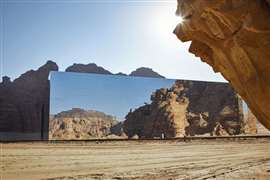 Maraya, meaning ‘mirror’ in Arabic, is a piece of art set in the desert canyon of Ashar Valley (Image: Royal Commission for AlUla)
Maraya, meaning ‘mirror’ in Arabic, is a piece of art set in the desert canyon of Ashar Valley (Image: Royal Commission for AlUla)
The AlUla project involves developing an archaeological, cultural and tourist complex in a region the size of Belgium, with the aim of making the AlUla, an ancient oasis city in the Medina province, into one of the Kingdom’s cultural capitals. Hegra, an archaeological site in the AlUla area, is Saudi Arabia’s first UNESCO World Heritage Site.
Ongoing construction projects include the Sharaan Resort close to Hegra, designed by French architect Jean Nouvel, which is inspired by the ancient techniques of the Nabataean inhabitants of the region who crafted monuments into sandstone in the area more than 2,000 years ago. Two new museums in the region – the Contemporary Art Museum and the Museum of the Incense Road have also broken ground in AlUla.
Diriyah Gate
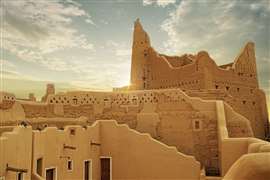 Diriyah (Image: Diriyah Gate Development Authority)
Diriyah (Image: Diriyah Gate Development Authority)
The Public Investment Fund (PIF)-backed Diriyah Company is in charge of restoring historic Diriyah, the first capital of Saudi Arabia. Under the Kingdom’s Vision 2030 plan, seven square kilometres of Diriyah, 15 minutes north-west of Riyadh city centre, will be transformed as part of a US$63 billion scheme.
Work has already started on the Diriyah Gate ‘gigaproject’ which involves creating entertainment, retail, hospitality, education, office and residential areas, including more than 20 hotels and a collection of museums. One of the first areas to undergo a transformation will be the Bujairi district, to “beautify” the area, improve infrastructure, and build a new arts centre – Diriyah Art Oasis, as well as a new 142-key hotel called the Samhan Heritage Hotel. Work is also underway to restore two square kilometres of the historic Wadi Hanifah, forming part of the Diriyah Gate masterplan, including restoring historic palm groves and farms, combined with new walking trails and picnic areas.
Jeddah Central
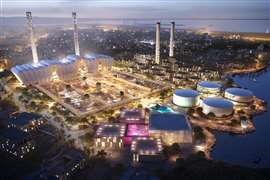 Heatherwick Studio has revealed plans for its proposed conversion of a former desalination plant into a museum and arts centre as part of the Jeddah Central project (Image: Heatherwick Studio)
Heatherwick Studio has revealed plans for its proposed conversion of a former desalination plant into a museum and arts centre as part of the Jeddah Central project (Image: Heatherwick Studio)
Jeddah Central is another massive urban development project, covering 5.7 million sq m in the centre of the city of Jeddah. The project aims to make Jeddah into a world-class destination capitalising on its location on the Red Sea coast and its proximity to religious pilgrimage destinations Makkah (also known as Mecca) and Madinah. The project will come in three phases, the first of which is due for completion at the end of 2027. It involves the construction of a 9.5km waterfront with a marina ready to receive yachts from inside and outside the kingdom, 2.1km of sandy beach, an opera house, a museum, a sports stadium, an Oceanarium and coral farms.
Eventually it will see the construction of 17,000 housing units and 2,700 hotel rooms. Last year, Jeddah Central Development Company, which is a subsidiary of the PIF, also signed a memorandum of understanding with two companies – Waterise and Ajlan & Bros Holding Group – to pursue and develop the implementation of new deep sea desalination technology to supply the city with clean water.
Jeddah Economic City (and Jeddah Tower)
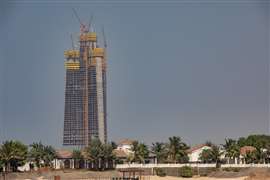 Construction on the 1km-tall Jeddah Tower has stalled but there are plans for a 2km-tall tower in Saudi Arabia (Image: Adobe Stock)
Construction on the 1km-tall Jeddah Tower has stalled but there are plans for a 2km-tall tower in Saudi Arabia (Image: Adobe Stock)
The future of Jeddah Economic City, a $20 billion development occupying 5.3 million sq m of land along the coastline of the Red Sea, had been unclear. Promising a “new era in urban development and living”, it involves the construction of residential quarters, business areas, commercial centres and diplomatic quarters, as well as academic institutions.
At its centre will sit what will become the world’s tallest tower, the 1km-high Jeddah Tower.
Construction on the tower, overseen by local contractor Saudi Binladen Group and designed by Chicago firm Adrian Smith + Gordon Gill Architecture, started in 2015. Originally, its cost was estimated at $1.2 billion and saw the construction of a huge 5m-thick concrete slab, sitting on top of 270 piles to support the massive tower.
By 2017, the tower reached 63 storeys but work came to a halt after two major backers of the project – Prince Alwaleed and Bakr bin Laden – were arrested during a purge ordered by new Crown Prince of Saudi Arabia, Mohammad bin Salman bin Abdulaziz Al Saud.
But the project is reported now reportedly “back in full motion”. A total of 14 contractors from across the world have been invited to bid to complete the tower, with a deadline for tenders of the end of this year.
King Salman Park
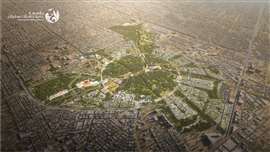 King Salman Park (Image: By Ghifar, CC BY-SA 4.0)
King Salman Park (Image: By Ghifar, CC BY-SA 4.0)
King Salman Park is a 16 sq km public space, five times the size of New York’s Central Park, named after Saudi Arabia’s ruler since 2015, King Salman bin Abdulaziz. Located in north-central Riyadh and designed by Saudi engineering firm Omrania and Danish firm Henning Larsen, it will contain a 90,000 sq m Visitor Pavilion, whose construction has been awarded to an unnamed Saudi company.
The Pavilion, designed by British architect David Adjaye, will include a plant nursery, multi-use hall, meeting rooms, exhibition areas, restaurants and cafes. The park, backed by the King Salman Park Foundation, will involve planting a million trees. As of last year, the King Salman Park Foundation had awarded contracts worth SAR 3.85 billion (US$1 billion) for its construction, including site preparation works, several tunnels and bridges, and infrastructure and preparation works in the Royal Arts Complex. The Foundation also signed an agreement with the Saudi Electricity Company to establish five power stations to supply the park with a total capacity of 580MW. It is set to open in 2024.
The Line (Neom)
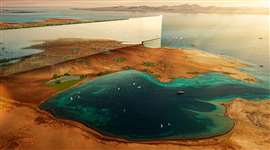 A rendering of The Line (Image courtesy of NEOM)
A rendering of The Line (Image courtesy of NEOM)
One of the most ambitious construction projects anywhere on the planet, The Line is a multi-billion-dollar linear city that, if completed, would be 170km in length and only 200 metres wide. Neom claims that the city will run on 100% renewable energy and will eventually be home to nine million people. Instead of roads, it will be linked by a single high-speed rail line, with a journey from end to end taking just 20 minutes. Construction work began in late 2021 and geotechnical specialist contractor Keller, which won a major piling contract for the project in 2022, is among companies working on the scheme. The first district of the city, called ‘Hidden Marina’ is set to open to residents by 2030.
Giles Pendleton, executive director of the project, has previously indicated that modern methods of construction will help the project team to deliver the vast project more quickly than conventional builds. Among the technologies Pendleton listed as being employed on the project were: modular construction, digital twins, 3D printing, augmented reality for design coordination and on-site decision making, drones for surveying, and even artificial intelligence and robots.
Masar
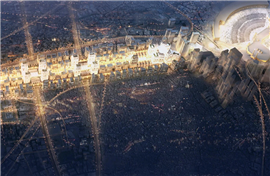 Digital render of how Masar Makkah will look from above (Image: Duncan & Ross)
Digital render of how Masar Makkah will look from above (Image: Duncan & Ross)
Masar is the name of a project to redevelop a 1.2 million sq m strip of land in the centre of Makkah, close to the Grand Mosque. It will involve the construction of tens of thousands of hotel and residential units, as well as retail and commercial space. Private developer Umm Al Qura, which owns Masar Destination, recently bought land in Makkah costing SAR 900 million (US$240 million) for the construction of new residential towers. So far, a total of nearly SAR 40 billion (US$11 billion) has been spent on Masar Destination, according to Umm Al Qura.
Mohammed bin Salman Non-profit City (MISK)
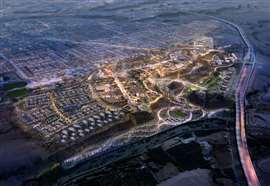 Digital render of Mohammed bin Salman Non-profit City (Image: Mohammed Bin Salman Misk Foundation)
Digital render of Mohammed bin Salman Non-profit City (Image: Mohammed Bin Salman Misk Foundation)
A 20-minute drive from downtown Riyadh, Mohammad bin Salman Non-Profit City is supported by Crown Prince and Prime Minister of Saudi Arabia Mohammed bin Salman’s personal foundation. The city promises to be an “incubator for youth and volunteer groups as well as local and international non-profit institutions”. It will cover 3.4 sq km and be home to schools, colleges, a conference centre, a science museum, an arts academy and gallery, a theatre and a residential complex.
UK-based Mace Consult is signed up to support the Foundation in delivering the MISK Foundation Centre, a centrepiece to the city. The Foundation Centre will cover 6,000 sq m of office accommodation and features a large internal atrium-covered garden and is due to open within the next couple of years.
The Mukaab (and New Murabba)
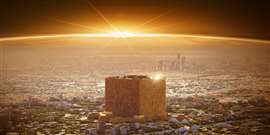 A visual of the Mukaab in the New Murabba downtown area (Image courtesy of Saudia Arabia PIF)
A visual of the Mukaab in the New Murabba downtown area (Image courtesy of Saudia Arabia PIF)
Saudi Arabia’s Public Investment Fund unveiled plans for one of its latest mega-projects – a 400m tall and 400m wide cube city called The Mukaab – early this year. The building, which the PIF claims would be large enough to hold 20 Empire State Buildings, will be the centrepiece of a new downtown in Riyadh.
It is part of the wider New Murabba project announced by Mohammad bin Salman. The New Murabba Development Company will oversee the project.
The Mukaab promises to be one of the largest built structures in the world. Inspired by the modern Nadji architectural style, its developers claim that it will be able to offer “ever-changing environments” using digital and virtual technology to create holographics.
The wider New Murabba project will feature green areas and walking and cycle paths to promote healthy lifestyles. It will also be home to a museum, technology and design museum, theatre, and more than 80 entertainment and cultural venues. It will sit at the intersection of King Salman and King Khalid roads to the northwest of Riyadh, over an area of 19 sq km. The plan involves building 104,000 residential units, 9,000 hotel rooms, 980,000 sq m of retail space, and 1.4 million sq m of office space. The entire project is due for completion in 2030.
Oxagon (Neom)
Oxagon will be home to a research and innovation campus and what its developers claim will be a sustainable port with a fully automated and integrated supply chain. In May this year, a consortium of contractors won a contract worth SAR 3 billion (US$800 million) to build the first phase of the Port of Neom.
Belgian contractor Besix and Boskalis have become the first European contractors to win a design and build lump sum contract with NEOM, to build the first phase of the region’s port. Work will involve dredging and construction of quay walls. Besix will work with local partner Modern Building Leaders (MBL) to design and build more than 3km of quay walls.
Oxagon will also contain a residential community and in July it emerged that hospitality giant IHG has won a deal to build a new 250-bed hotel there. The Hotel Indigo property will open in 2026.
Qiddiya
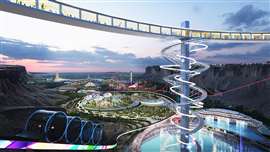 Aerial view of Qiddiya’s Festival Grounds and resort core (Image: Qiddiya)
Aerial view of Qiddiya’s Festival Grounds and resort core (Image: Qiddiya)
Qiddiya is another ‘gigaproject’ backed by the Public Investment Fund. It involves building a ‘disruptive’ new destination city based around entertainment, sports and culture. It will feature theme parks, sports arenas, a Jack Niklaus-branded golf course, academies for sports and the arts, concert and entertainment venues, race tracks and nature and environment experiences, as well as housing. Qiddiya will be around 45km from the centre of Riyadh, covering an area of 376 sq km, with 223 sq km of planned development area.
Red Sea Global
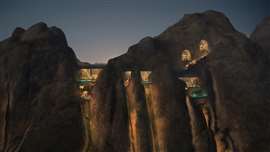 Desert Rock, a mountain resort being built into the rockface as part of the Red Sea, is more than 50% complete (Image: Red Sea Global)
Desert Rock, a mountain resort being built into the rockface as part of the Red Sea, is more than 50% complete (Image: Red Sea Global)
Another project backed by the PIF, Red Sea Global claims to be the most ambitious luxury tourism development in the world.
Currently, it comprises two destinations announced by Crown Prince Mohammad bin Salman, called the Red Sea, on the west coast of the country, and Amaala on the northwestern coast.
So far, the Red Sea’s first three hotels and phase one of Red Sea International Airport are on track to open later this year, with a further 13 hotels and supporting infrastructure to follow.
Work is underway on 11 resorts and infrastructure across Shura Island, with 100 construction contracts in place and a similar number out to tender.
Developer Red Sea Global has also installed more than 760,000 photovoltaic panels to power phase one of the Red Sea. One of its five solar farms is located near Six Senses Southern Dunes, The Red Sea, which will be the first hotel to open at The Red Sea in the coming months.
On Sheybarah Island, RSG has installed 38 prefabricated stainless steel overwater villas.
Upon full completion, The Red Sea will comprise 50 resorts offering up to 8,000 hotel rooms and more than 1,000 residential properties across 22 islands and six inland sites.
Amaala’s first phase of development is focused on its Triple Bay masterplan, which will offer 1,300 rooms in eight hotels. The first hotels there will open in 2024, ahead of completion in 2027. When complete, Amaala will have over 3,000 hotel rooms across 25 hotels, 943 luxury residential villas, as well as high-end retail and food outlets, a yacht club, wellness, and recreational facilities.
Roshn
Backed by Saudi Arabia’s Public Investment Fund, Roshn Group is a real estate developer in charge of delivering 400,000 homes across Saudi Arabia by 2030. Its goal is to increase the Kingdom’s rate of home ownership to 70%.
In September, the company announced four major commercial partnerships, totalling over SAR 9 billion (US$2.4 billion). It has signed a deal with Chinese contractor China Harbour Engineering Company (part of China Communications Construction Company), to develop 6,700 residential units, mosques, community centres, retail and public amenities at Roshn’s Sedra and Warefa communities in Riyadh. Roshn claimed that the SAR 7.7 billion (US$2.1 billion), 45-month contract is the largest in value to be announced among Saudi gigaprojects to date.
Saudi Downtown
The Saudi Downtown Company, once again owned by the PIF, is a collection of 12 projects across 11 regions of Saudi Arabia and covering 10 million sq m of land. Each project is a mixed-use development that aims to improve lifestyles and promote economic growth through the construction of shopping, hospitality, tourism, office and housing schemes. The 12 cities involved are: Al-Madinah Al-Munawarah, Al-Ahsa, Al-Khobar, Buraydah, Taif, Arar, Hail, Tabuk, Dumat Al-Jandal, Jizan, Najran, and Al-Baha.
Saudi Entertainment Ventures (Seven)
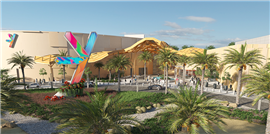 Digital render of the Seven development (Image: Saudi Arabia’s Public Investment Fund)
Digital render of the Seven development (Image: Saudi Arabia’s Public Investment Fund)
PIF-owned entertainment and recreation company Saudi Entertainment Ventures (Seven) has started construction work on a new destination in Almadinah in the west of the Kingdom, with an investment of SAR 1.3 billion (USD$350 million). The project involves a 4,000 sq m family entertainment centre with an e-karting track, a Discovery Adventures centre offering treks, treehouse trails and educational missions, and a Play-Doh entertainment centre.
Construction has started with BUJC, a joint venture between Al Bawani Co and UrbaCon Trading and Contracting carrying out construction works. The project is part of Saudi Arabia’s plans to welcome 100 million visitors per year by 2030.
Sindalah (Neom)
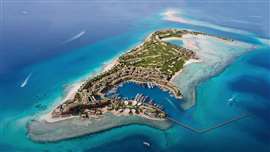 Digital render of Sindalah (Image: Neom)
Digital render of Sindalah (Image: Neom)
Sindalah has been billed as an 84-hectare luxury island resort in the Red Sea with three luxury hotels, a golf course, restaurants and over 50 retail outlets. It will also serve as a “yachting gateway” to the Mediterranean. Scheduled for completion in 2024, it will be the first element of the wider Neom development to reach completion.
Trojena (Neom)
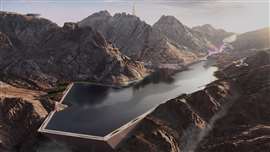 Digital render of Trojena (Image: Neom)
Digital render of Trojena (Image: Neom)
Neom has announced plans for Trojena, a ski resort 50km from the Gulf of Aqaba coast. While it seems an unlikely development for a desert kingdom, Trojena will be at altitude, with mountains in the region ranging from 1,500m to 2,600m high and experiences sub-zero winter temperatures. Neom said the alpine and adventure sports resort would cover nearly 60 square kilometres, featuring 36km of ski slopes, 42,000 sq m of retail and dining outlet space, over 3,600 hotel rooms and serviced apartments, and a 3,000-seat mountainside amphitheatre.
Other Neom projects: Alongside the four different regions of NEOM, other major construction projects are taking place to provide the infrastructure around them. In May this year, a joint venture between Italian contractor Webuild and its Saudi Arabian counterpart Sajco won a US$1.5 billion (€1.4 billion) contract to build a high-speed rail line connecting The Line with Oxagon, for example.
Meanwhile, French engineering and project management company Assystem has won a deal to conduct a series of pre-development studies for up to 20GW of solar energy plants within Neom.
The solar parks could cover up to 420 sq km of space across seven planned solar photovoltaic parks in the Tabuk and Duba regions in the northwest of the country.
STAY CONNECTED



Receive the information you need when you need it through our world-leading magazines, newsletters and daily briefings.
CONNECT WITH THE TEAM
